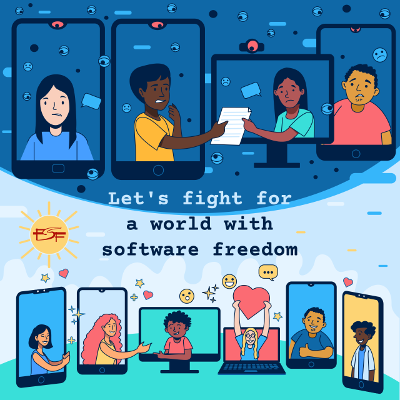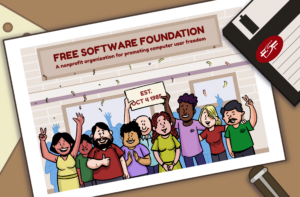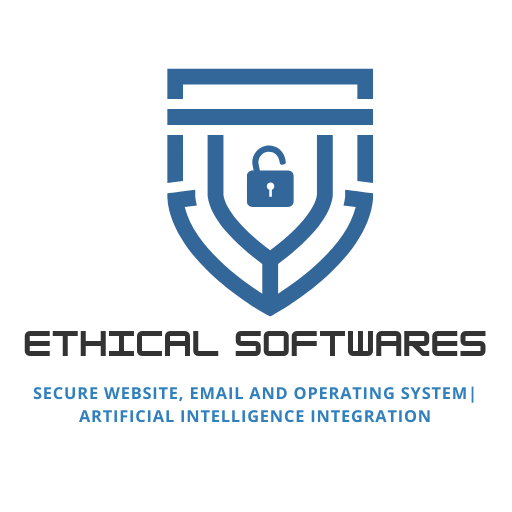Difference between Free software and Open source software
Posted by anhad on 2024/10/16

Greetings,
Most software users have confusion related to the difference between the terms Free software (Free means ‘freedom’ or ‘swatantra’) and Open source software. This confusion results in wrong selection of software.
I had studied the research journal/white paper written by Richard stallman sir on the topic ‘Why Open Source Misses the Point of Free Software’. For helping software users across the world in understanding this difference, this is the summary of the above White Paper written by Richard sir which will help you understand the difference between Free software and Open source software.
- The Free Software Foundation (FSF) is a nonprofit with a worldwide mission to promote computer user freedom.
Board members of FSF – https://www.fsf.org/about/staff-and-board/

- The Open Source Initiative (OSI) is a California public benefit corporation, with 501(c)3 tax-exempt status, founded in 1998.
We are also actively involved in Open Source community-building, education, and public advocacy to promote awareness and the importance of non-proprietary software. OSI participates in Open Source conferences and events, to meet with open source developers and users, and to discuss with executives from the public and private sectors about how Open Source technologies, licenses, and models of development can provide economic and strategic advantages. The ideology of Open Source softwares was created by companies selling Proprietary software like Google and Microsoft.
Board members of The Open Source Initiative (OSI)- https://opensource.org/about/board-of-directors
- Free software – When we call software “free,” we mean that it respects the users’ essential freedoms: the freedom to run it, to study its source code and change it, and to redistribute copies with or without changes in source code. This is a matter of freedom, not price, so think of “free speech,”. This is the philosophy of Free software :
https://www.gnu.org/philosophy/philosophy.html
- Open source software – It means that source code of the software is available for software users to read. So, it is read-only. On one hand, the source code of the open source software is provided to its users and on the other hand it restricts the user freedom. For some open-source softwares, the user has to pay a reasonable re-production cost for obtaining its source code. Re-production means that the user can re-use it. This is the philosophy of Open source software :
- Free software license – The free software movement has campaigned for computer users’ freedom since 1983. In 1984 we launched the development of the free operating system GNU, so that we could avoid the non-free operating systems that deny freedom to their users. During the 1980s, we developed most of the essential components of the system and designed the GNU General Public License (GNU GPL) to release them under—a license designed specifically to protect freedom for all users of a program 3.Open source software license – the criteria for open source are concerned solely with the use of the source code. Indeed, almost all the items in the Open Source Definition are formulated as conditions on the software’s source license
- Free Software – The Free software movement campaigns for freedom for the users of computing; it is a movement for freedom and justice. Free software has Social and ethical values. Free software is an ethical imperative, essential respect for the users’ freedom. 4. Open source software – The open source idea values mainly practical advantage and does not campaign for principles. Some of the supporters of open source considered the term a “marketing campaign for free software,” which would appeal to business executives by highlighting the software’s practical benefits, while not raising issues of right and wrong that they might not like to hear. The term “open source” quickly became associated with ideas and arguments based only on practical values, such as making or having powerful, reliable software.
- The free software activist will say, “Your program is very attractive, but I value my freedom more. So I reject your program. I will get my work done some other way, and support a project to develop a free replacement.” If we value our freedom, we can act to maintain and defend it. 5. A pure open source enthusiast, one that is not at all influenced by the ideals of free software, will say, “I am surprised you were able to make the program work so well without using our development model, but you did. How can I get a copy?” This attitude will reward schemes that take away our freedom, leading to its loss.
- Free software – According to Free software philosophy, software can be said to serve its users only if it respects their freedom. 6. Open Source software – The idea that we want software to be powerful and reliable comes from the supposition that the software is designed to serve its users. If it is powerful and reliable, that means it serves them better. The Open source software is designed to put chains on its users. This powerfulness means the chains are more constricting, and reliability that they are harder to remove. Malicious features, such as spying on the users, restricting the users, back doors, and imposed upgrades are common in proprietary software, and some open source supporters want to implement them in open source programs. For example, “open source DRM” software. Their idea is that, by publishing the source code of programs designed to restrict your access to encrypted media and by allowing others to change it, they will produce more powerful and reliable software for restricting users like you. The software would then be delivered to you in devices that do not allow you to change it.
- Free software – The focus is on ethics and freedom.
7. Open source – The focus is on immediate practical benefits of certain free software, they might be able to “sell” the software more effectively to certain users, especially business.
- Free software community – Convincing and attracting users to join free software community encourages them to becoming defenders of their own software freedom. Free software community values freedom. 8. Open Source community – The leaders of open source have figured out that by keeping quiet about ethics and freedom, and talking only about the immediate practical benefits of certain free software, they might be able to “sell” the software more effectively to certain users, especially business. Open source community values practical advantages of open source software and offers temptations to users for purchasing it.
9. Examples of Free software – Libre Office, GNU Icecat browser
https://www.fsf.org/working-together/gang/icecat
9. Examples of Open source software – Mozilla firefox browser
Open source AI – https://opensource.org/deepdive
~~~~~~~~~~~~~~~~~~~~~~~~~~~~~~~~~~~~~

Please choose Freedom or Swatantra Software in your personal and professional life !
Reference Link :
‘Why Open Source Misses the Point of Free Software’
written by Richard Stallman
https://www.gnu.org/philosophy/open-source-misses-the-point.html
~~~~~~~~~~~~~~~~~~~~~~~~~~~~~~~~~~~~~~~~~~~
Request for subscription to mailing list of Ethical Softwares :
If you want to receive details of Research Blogs, Book launches, Shop section and Event updates of Ethical Softwares by email, please send this email to info@ethicalsoftwares.in
.
“My name is ABC DEF. I want to subscribe to the mailing list of Ethical Softwares”
Thank you
Kuber
Filed under General
Difference between the terms Hacking and Cracking stated by Mert sir of Free Software Foundation !
टेक्नोलॉजी कंपनियों द्वारा जनता का साइबर अपराध (cyber crime) और जासूसी

thank you so much for this research summary